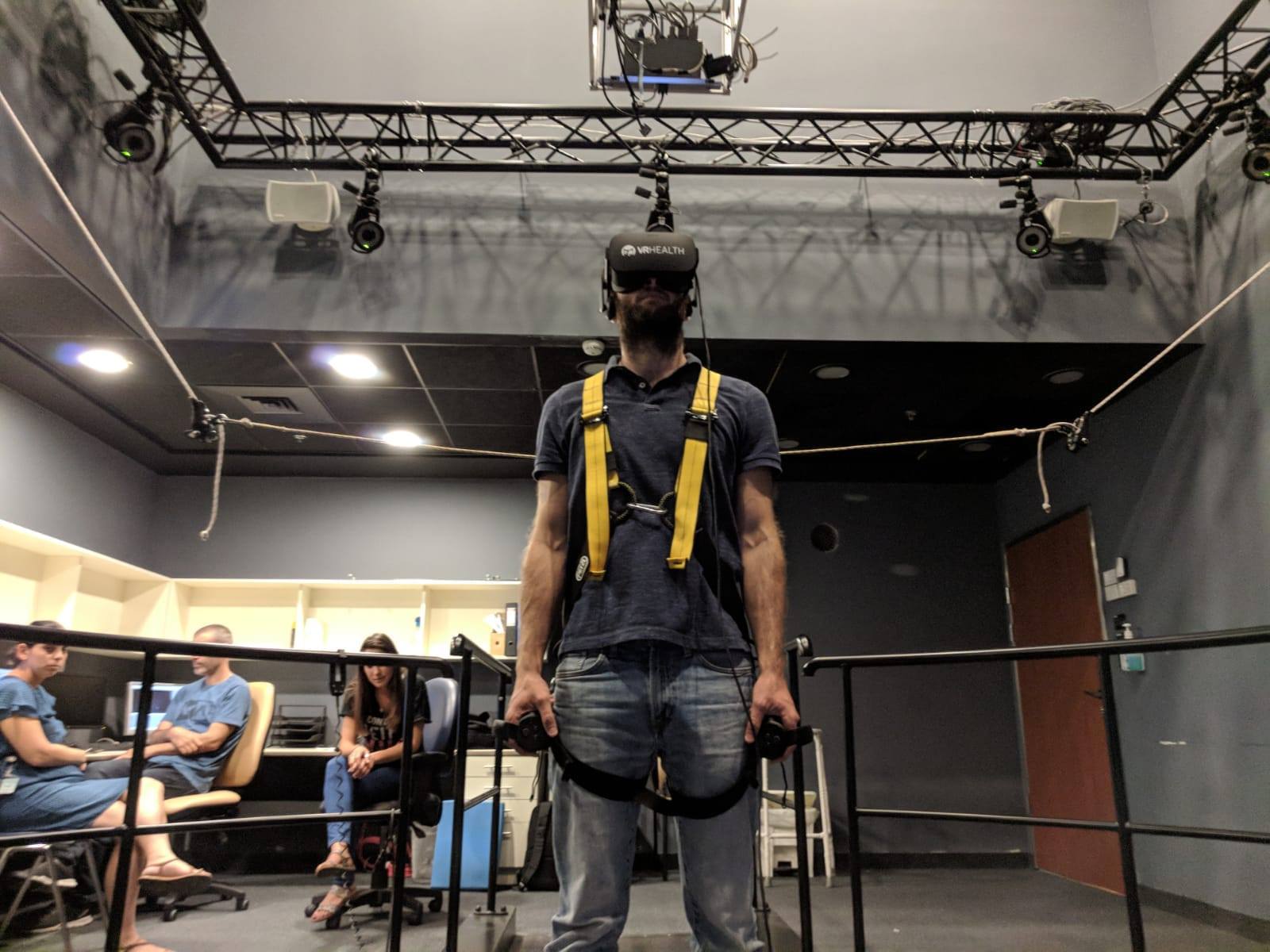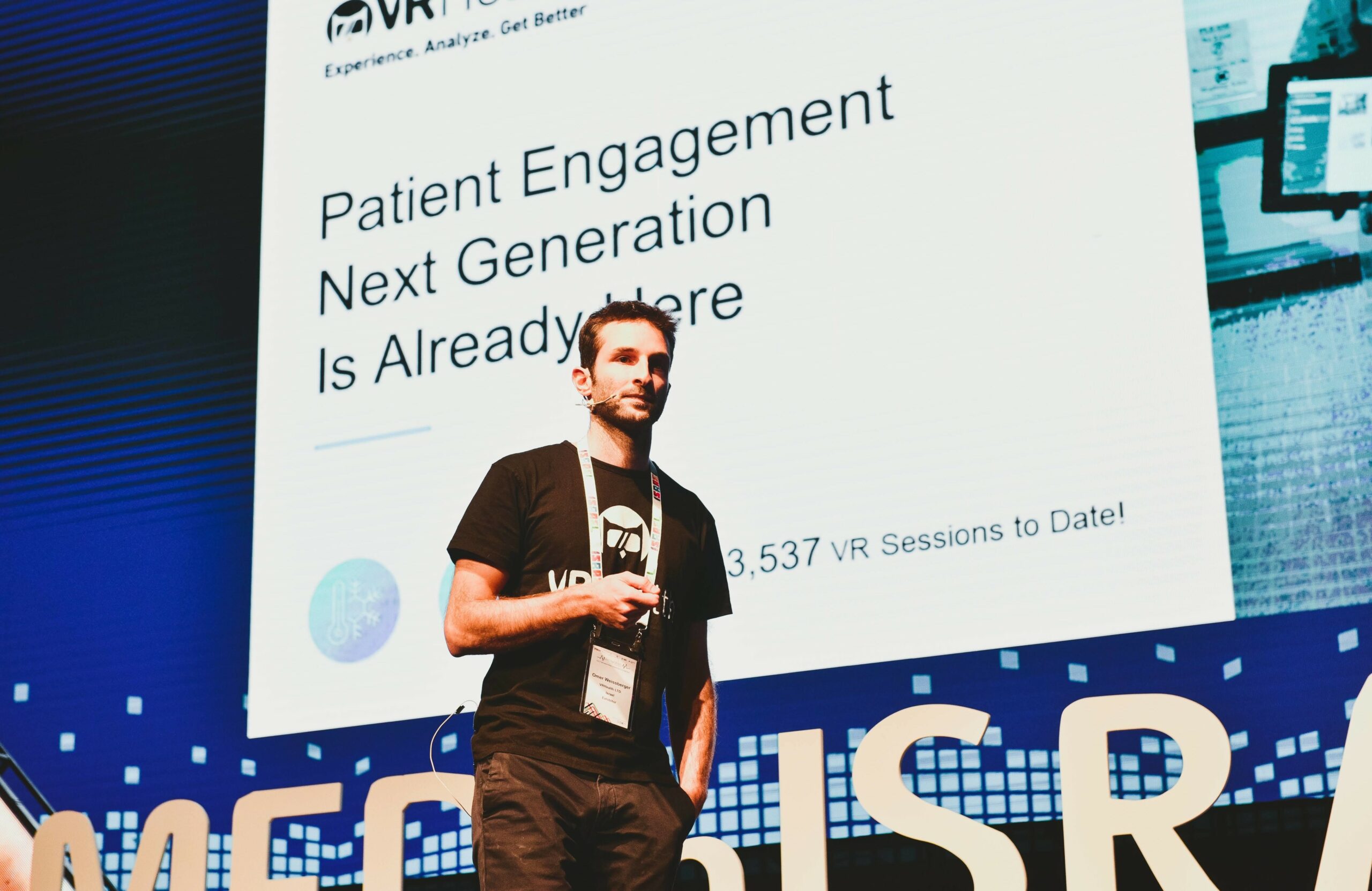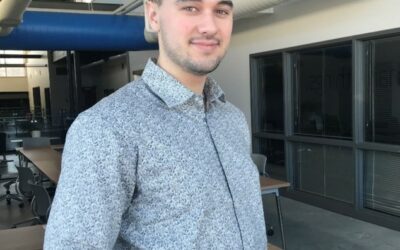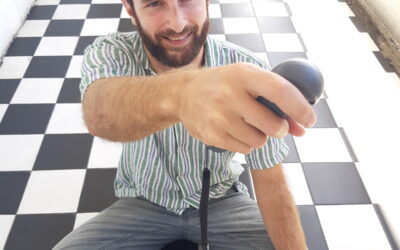Institution name – XRHealth
Linkedin – https://www.linkedin.com/in/omer-weissberger
Email – omerweissberger@gmail.com
Where is your institution located?
I work at XRHealth, a company that develops medical VR software for physical therapy, occupational therapy, and psychological therapy in telerehabilitation, using one-on-one video therapy sessions, and VR medical software for rehabilitation processes. The XRHealth platform combines medical applications with advanced data analytics and remote monitoring, providing a comprehensive solution for clinicians and patients. The XRHealth platform collects and analyzes patient interactions with virtual objects in virtual environments. AI cloud computing algorithms deliver enhanced experience and real-time data analytics that can be used in clinics and at home.
Our company operates in the US, Australia, and Israel. I’m in charge of the Israeli medical operations, based in Tel Aviv. I work with hospitals around the country in various departments, collaborating with diverse clients and researchers. For example, my recent clinical studies are with the rehabilitation department in Soroka Hospital, in south Israel, on VR training effect on upper extremity functionality for stroke, with Hadassah Hospital, near Jerusalem, on VR distraction therapy for burn injuries, and with Sheba Hospital, near Tel-Aviv, on VR stress reduction effect for oncology patients.

How did it start? How long has it been around?
The idea started back in 2016 when XRHealth’s founder thought of combining physical therapy with VR technology, which was in its first steps in its current version. He established the company, and I joined a few weeks later, working during my 3rd year in physical therapy bachelor’s degree. The startup had a small team, so I got involved in a variety of areas including clinical characterization of the product, developing data that quantified the abilities during the VR sessions, training and implementing the VR system with clinical teams in hospitals, clinical research, quality assurance, and more.
We initially focused on medical software intended for physical therapy for neck rehabilitation and expanded to upper extremity and full-body training. As we realized the great potential of the VR system, we began to develop to additional areas: occupational therapy and psychological therapy.
In the beginning, we worked only B2B with hospitals in Israel and the US. When the VR stand-alone systems started to emerge, and the operation became more user-friendly, we expanded our focus to B2C clients and operated virtual clinics that perform all the rehabilitation processes through telemedicine. Covid-19 made telemedicine more legitimate and somehow allowed us to progress in this field.
What patient populations do you serve?
The XRHealth virtual platforms serve patients seeking physical therapy, occupational therapy, and psychological therapy services. The diagnosis can vary from orthopedic disorders such as frozen shoulder and neck whiplash to neurological diseases such as multiple sclerosis, Parkinson’s, and stroke. Chronic pain diseases such as Fibromyalgia and CRPS can also benefit from the VR system, as well as cognitive deficits, ADHD, and even stress and anxiety patients.
What research interests does your lab have?
At the moment we are focusing our research efforts on two main aspects. First, we want to show that VR medical software can be as effective or even more effective than the recent gold standard rehabilitation program and tools. The main advantage of VR as I see it, is that it’s fun, thus making patients engaged more than they do compared to traditional therapy – the more patients are engaged, the more chance we have to make them better. Second, we are focused on telemedicine and trying to show that traditional physical medical intervention in some cases is not better than telemedicine intervention. Using VR technology has many benefits such as quantifying and analyzing the patient’s performance, making monitoring on patients easier and of higher quality. Today we don’t only show therapists whether their patients performed their home exercises or not, we show how good they did it, presenting data such as response times, quality of movement, range of motion, smoothness of movement, and more.
What makes it unique? How is it better than other existing systems?
What makes our VR system unique is the variety of aspects that can help patients and the data that the system can produce and analyze. Other existing medical VR software that I’m familiar with are usually focused and intended for only a specific issue that the patients require. Since patients do not come with only one problem, but often have several problems in different areas that are affected by each other, the XRHealth system enables helping in those different areas – physical, cognitive, and mental. If my patient, for example, has a shoulder problem or a physical problem, he might also be depressed because lately he can’t pick up his daughter, or play basketball as he used to do. So using our VR system will enable him to train not only his physical aspect and his shoulder, but also his mental aspect, by performing mindfulness, meditation, or breathing exercises.
Another feature that makes XRHealth system unique is the clinician control panel. Before each VR medical session that a patient performs, the system has a setting screen that the clinician controls, and enables him to decide the parameters that affect the difficulty level of the session. This creates a very good adjustment for the session since the patient will perform tailor-made medical training adjusted for his specific medical needs.




